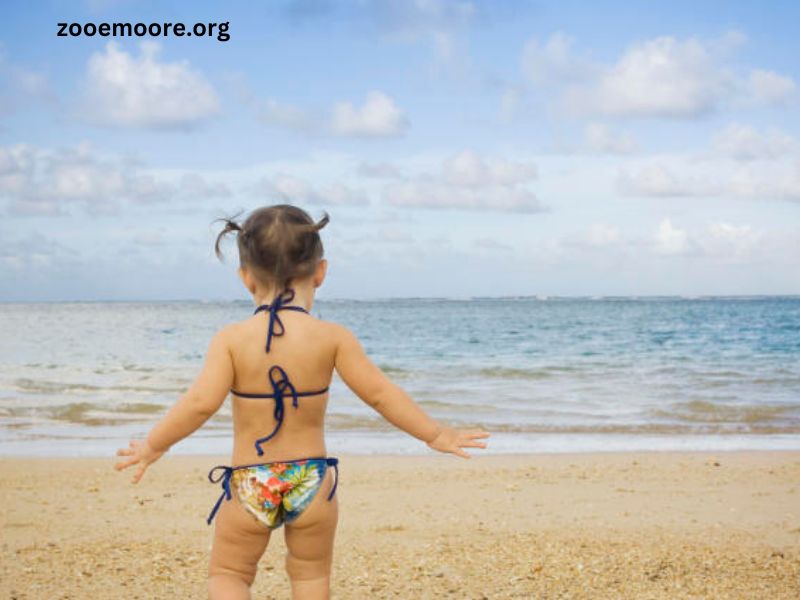As summer approaches, the topic of appropriate swimwear for children, particularly tweens, becomes increasingly relevant. For parents and guardians of 12-year-olds, the search for the right bathing suit can spark debates over modesty, fashion, and the implications of social media. This article explores the importance of choosing appropriate swimwear, the factors influencing these choices, and tips for parents to help their children navigate this often complex landscape.
The Importance of Appropriate Swimwear
Developmental Considerations
At age 12, many children experience significant physical, emotional, and social changes. This transitional phase, often marked by a quest for individuality, can make selecting swimwear particularly challenging. While some tweens may lean towards more revealing styles, it’s crucial to consider that many 12-year-olds are still navigating their self-identity and self-esteem. Swimwear choices can have lasting impacts on body image and peer relationships.
Social Media Influence
In today’s digital age, children are exposed to a barrage of images and messages that can shape their perceptions of beauty and fashion. Social media platforms like Instagram and TikTok often showcase influencers and celebrities in various swimwear styles, creating pressure for young girls and boys to conform to those ideals. This influence can lead to the pursuit of inappropriate bathing suits that prioritize style over comfort and appropriateness.
Setting Boundaries
Establishing guidelines for appropriate swimwear helps parents communicate their values and expectations while also allowing their children to express themselves. Clear boundaries can empower tweens to make informed choices while navigating peer pressure and media influences.
What Makes a Bathing Suit Inappropriate?
Revealing Styles
Bathing suits that are excessively revealing, such as string bikinis or swim trunks with minimal coverage, may not be suitable for 12-year-olds. At this age, many children are still developing a sense of modesty, and wearing overly revealing swimwear can lead to discomfort or unwanted attention.
Sexualization Concerns
There is growing concern over the sexualization of children and tweens in fashion. Many brands are producing swimwear that mimics adult styles, which can inadvertently encourage sexualized behavior. It’s essential to recognize that children should feel comfortable and protected in their swimwear, both physically and emotionally.
Trend vs. Comfort
While it’s natural for children to want to follow trends, it’s important to prioritize comfort and functionality. Swimwear that is overly tight or has complicated designs can hinder a child’s ability to swim, play, and enjoy activities in the water. A balance between style and practicality is vital.
Factors to Consider When Choosing Swimwear
Comfort and Fit
When selecting a bathing suit for a 12-year-old, consider both comfort and fit. A well-fitting suit should allow for movement without being constricting. Parents should encourage their children to try on different styles to find what feels best, fostering a sense of agency in their choice.
Coverage and Modesty
Parents may have differing opinions on what constitutes appropriate coverage. Establishing a standard based on family values can help guide the decision-making process. Options like tankinis or swim shorts can provide more coverage while still being stylish.
Fabric and Quality
The fabric and quality of swimwear are important for both comfort and durability. Opting for high-quality materials can prevent rashes or discomfort, allowing tweens to enjoy their time in the water without distraction.
Age Appropriateness
Swimwear designed for younger children often has a playful aesthetic, which can be more age-appropriate for tweens. Brands that focus on modesty and age-appropriate designs can be a great resource for parents looking for suitable options.
Encouraging Healthy Conversations
Open Dialogue
Engaging in open conversations about body image, modesty, and the media’s influence on fashion can help tweens navigate their feelings and choices more effectively. Parents should create a safe space for their children to express their opinions and concerns regarding swimwear, allowing them to feel heard and understood.
Education on Body Positivity
Teaching children about body positivity and self-acceptance can empower them to embrace their bodies, regardless of societal expectations. Discussing the importance of self-respect and confidence can help children make choices that align with their values.
Peer Influence
Discussing the impact of peer influence on clothing choices is crucial. Encourage children to think critically about why they may feel pressured to wear certain styles. Reinforcing the idea that it’s okay to stand out from the crowd can foster independence and self-confidence.
Tips for Parents
Lead by Example
Parents can model healthy attitudes toward body image and swimwear choices. By demonstrating confidence in their own bodies and making thoughtful choices about their clothing, parents can inspire their children to do the same.
Shop Together
Taking the time to shop for swimwear together can be a bonding experience. This allows parents to guide their children in making appropriate choices while also respecting their opinions. Encourage tweens to pick out styles they feel comfortable in, rather than solely focusing on what’s trendy.
Set Clear Expectations
Setting clear expectations regarding swimwear can help avoid misunderstandings. Parents should communicate their values and reasons for choosing certain styles, helping children understand the importance of modesty and appropriateness.
Embrace Individuality
While it’s important to set boundaries, it’s equally crucial to allow children to express their individuality. Encourage them to find styles that reflect their personality while still being mindful of appropriateness. This balance can foster a sense of ownership over their choices.
Conclusion
Choosing appropriate bathing suits for 12-year-olds is a multifaceted issue that requires careful consideration. With the influence of social media, the desire for self-expression, and the ongoing journey of self-discovery, parents must navigate this complex terrain with empathy and understanding. By fostering open communication, setting clear expectations, and prioritizing comfort and modesty, parents can help their tweens make informed choices that align with their values. Ultimately, the goal is to empower children to feel confident and comfortable in their skin, regardless of the bathing suit they choose to wear.



